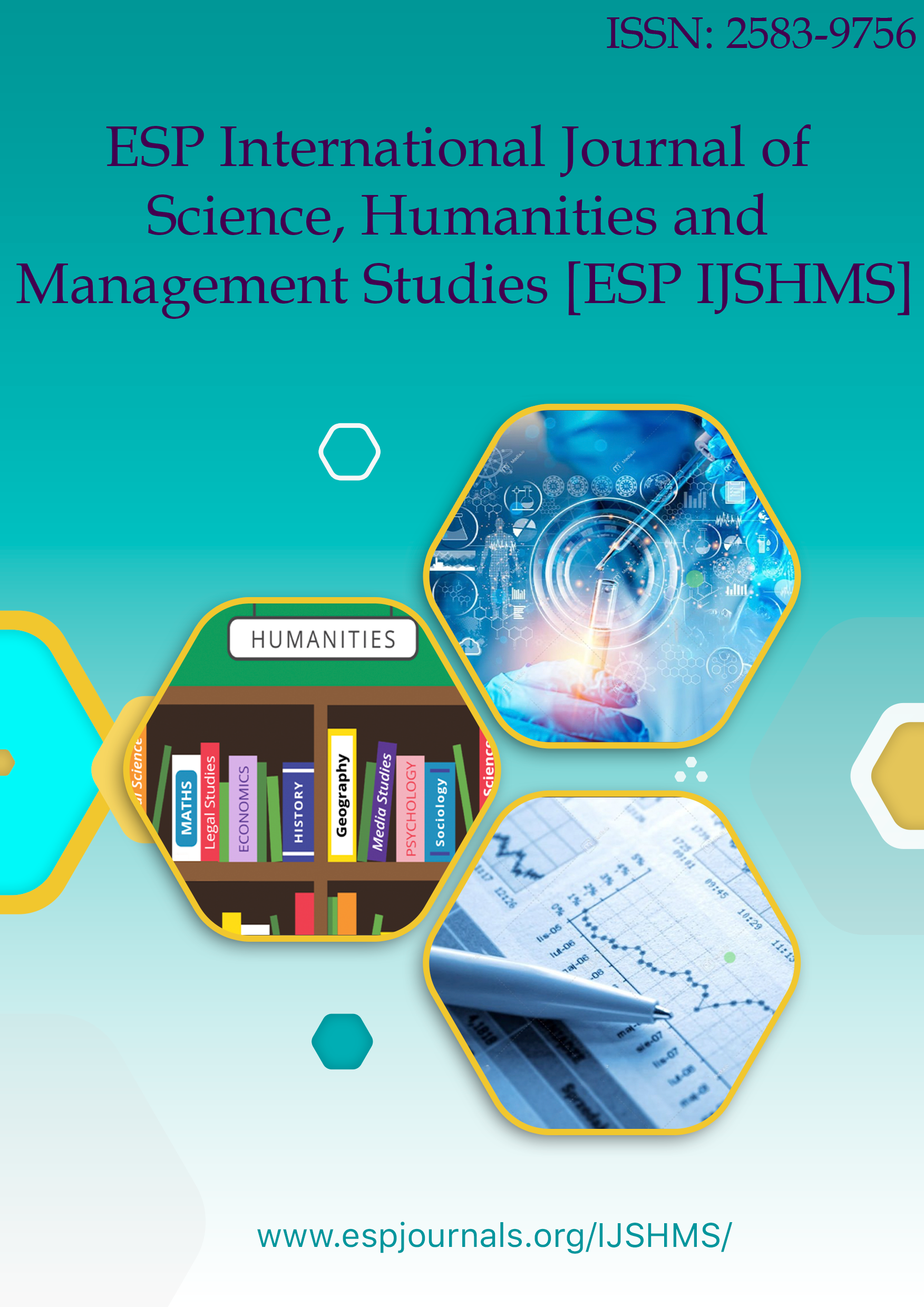ESP International Journal of Science, Humanities & Management Studies(ESP-IJSHMS)
Citation :
Nguyen Thi Thuy Dung, 2024. "Applying Error Correction Techniques for Students at Tan Trao University in English Speaking Lessons" ESP International Journal of Science, Humanities & Management Studies(ESP-IJSHMS) Volume 2, Issue 3: 31-39.
Abstract :
The effective application of error correction techniques is vital in enhancing the development of English speaking skills among students. This study examines the strategic and judicious use of various error correction methods during English speaking lessons.
The research highlights the importance of establishing a supportive and non-threatening classroom environment that encourages students to actively participate and take risks in their oral communication. It emphasizes the need for a balanced and nuanced approach to error correction, recognizing the delicate balance between providing timely feedback and maintaining the flow of communication.
The study explores a range of error correction techniques, such as recasts, clarification requests, and elicitation, and discusses how teachers can tailor their approach to the specific needs and proficiency levels of their students. Additionally, the research underscores the significance of providing constructive and encouraging feedback, which not only helps students identify and correct their errors but also fosters a growth mindset.
Furthermore, the integration of self-correction and peer-correction activities is examined as a means of empowering students to take ownership of their learning, developing their metalinguistic awareness and enhancing their ability to monitor and refine their own oral production.
The findings of this study contribute to the existing body of knowledge on effective language teaching practices and offer valuable insights for educators seeking to create a supportive and nurturing environment for the development of students' communicative competence in English.
References :
[1] Lyster, R., & Ranta, L. (1997). Corrective feedback and learner uptake: Negotiation of form in communicative classrooms. Studies in Second Language Acquisition, 19(1), 37-66.
[2] Sheen, Y. (2004). Corrective feedback and learner uptake in communicative classrooms across instructional settings. Language Teaching Research, 8(3), 263-300.
[3] Ellis, R. (2009). Corrective feedback and teacher development. L2 Journal, 1(1), 3-18.
[4] Li, S. (2010). The effectiveness of corrective feedback in SLA: A meta-analysis. Language Learning, 60(2), 309-365.
[5] Mackey, A., & Goo, J. (2007). Interaction research in SLA: A meta-analysis and research synthesis. In A. Mackey (Ed.), Conversational interaction in second language acquisition (pp. 407-452). Oxford University Press.
[6] Ferris, D. R. (2004). The “grammar correction” debate in L2 writing: Where are we, and where do we go from here? (and what do we do in the meantime...?). Journal of Second Language Writing, 13(1), 49-62.
[7] Ammar, A., & Spada, N. (2006). One size fits all? Recasts, prompts, and L2 learning. Studies in Second Language Acquisition, 28(4), 543-574.
[8] Long, M. H. (2006). Problems in SLA. Lawrence Erlbaum Associates.
[9] Han, Z. (2002). Rethinking corrective feedback in communicative language teaching. RELC Journal, 33(1), 1-34.
[10] Russell, J., & Spada, N. (2006). The effectiveness of corrective feedback for the acquisition of L2 grammar: A meta-analysis of the research. In J. Norris & L. Ortega (Eds.), Synthesizing research on language learning and teaching (pp. 133-164). John Benjamins.
[11] Truscott, J. (1996). The case against grammar correction in L2 writing classes. Language Learning, 46(2), 327-369.
[12] Panova, I., & Lyster, R. (2002). Patterns of corrective feedback and uptake in an adult ESL classroom. TESOL Quarterly, 36(4), 573-595.
[13] Lightbown, P. M., & Spada, N. (1990). Focus-on-form and corrective feedback in communicative language teaching: Effects on second language learning. Studies in Second Language Acquisition, 12(4), 429-448.
[14] Seedhouse, P. (1997). The case of the missing “no”: The relationship between pedagogy and interaction. Language Learning, 47(3), 547-583.
[15] Havranek, G. (2002). When is corrective feedback most likely to succeed? International Journal of Educational Research, 37(3-4), 255-270.
[16] Doughty, C. (2001). Cognitive underpinnings of focus on form. In P. Robinson (Ed.), Cognition and second language instruction (pp. 206-257). Cambridge University Press.
[17] Yoshida, R. (2008). Teachers' choice and learners' preference of corrective feedback types. Language Awareness, 17(1), 78-93.
[18] Oliver, R. (2000). Age differences in negotiation and feedback in classroom and pairwork. Language Learning, 50(1), 119-151.
[19] Brown, H. D. (2007). Principles of Language Learning and Teaching (5th ed.). Pearson Education.
[20] Edge, J. (1989). Mistakes and correction. Longman.
Keywords :
Error Correction, English Speaking, Communicative Competence, Language Teaching, Student Engagement.


 : 10.56472/25849756/IJSHMS-V2I3P105
: 10.56472/25849756/IJSHMS-V2I3P105